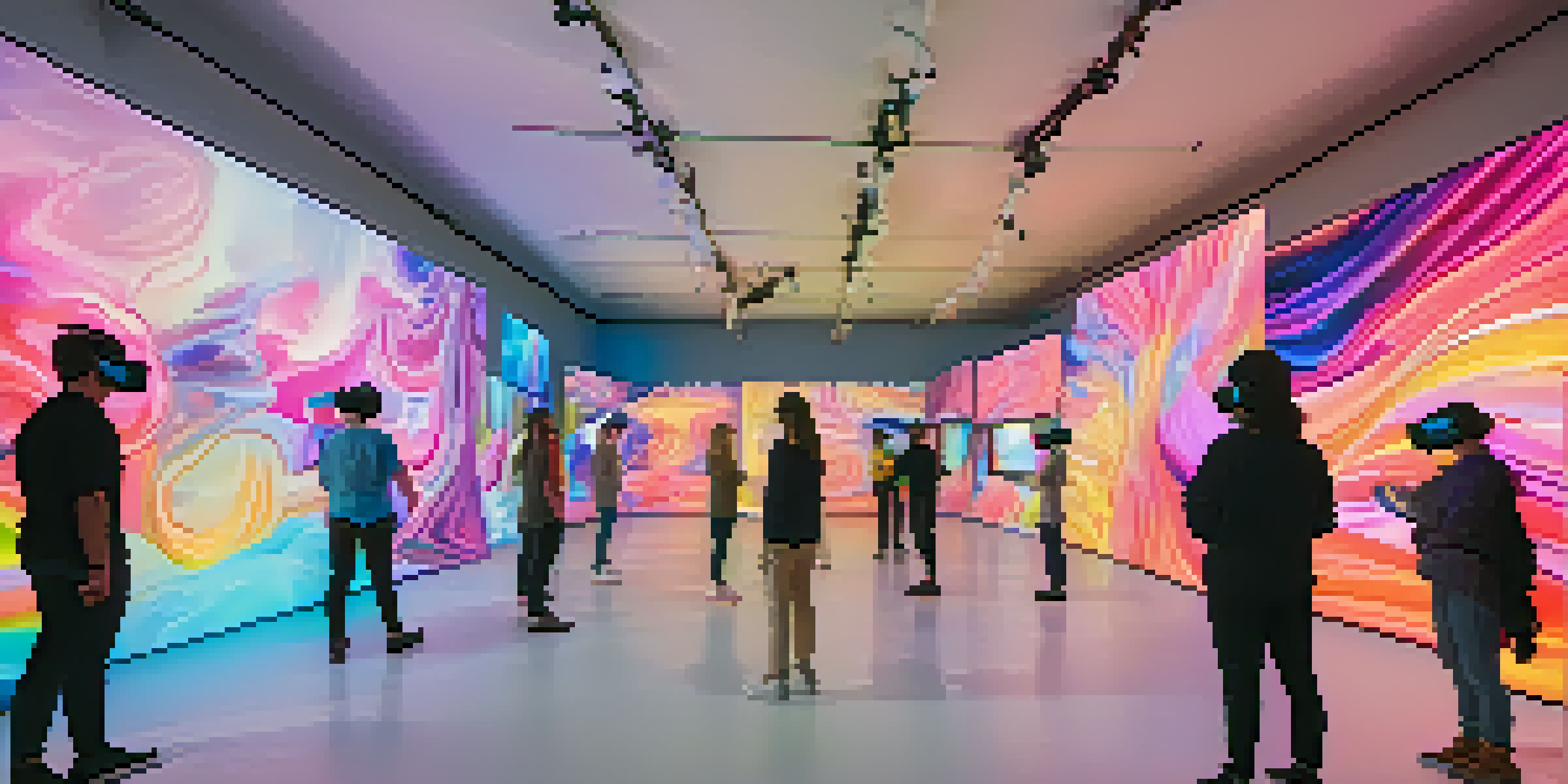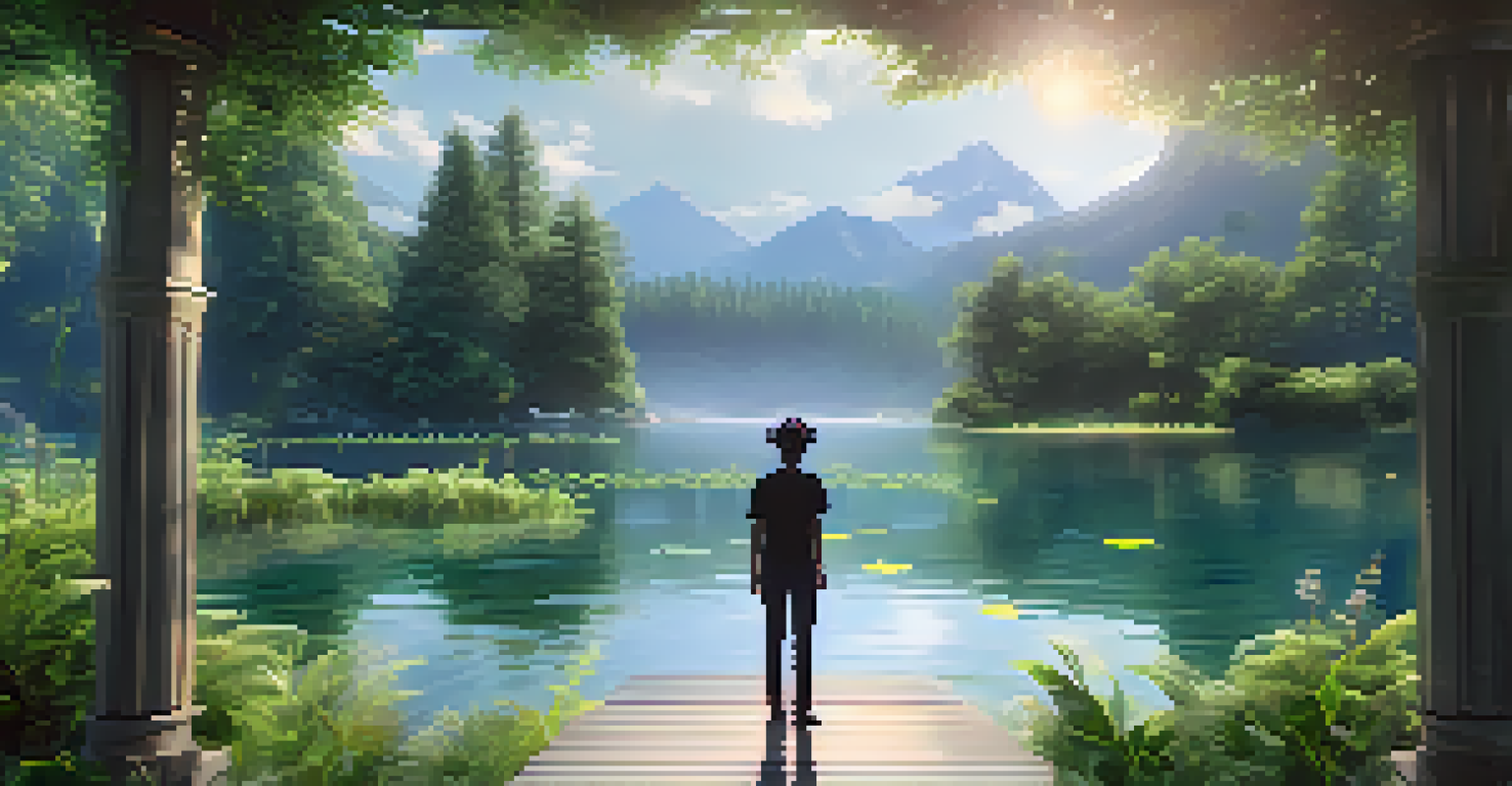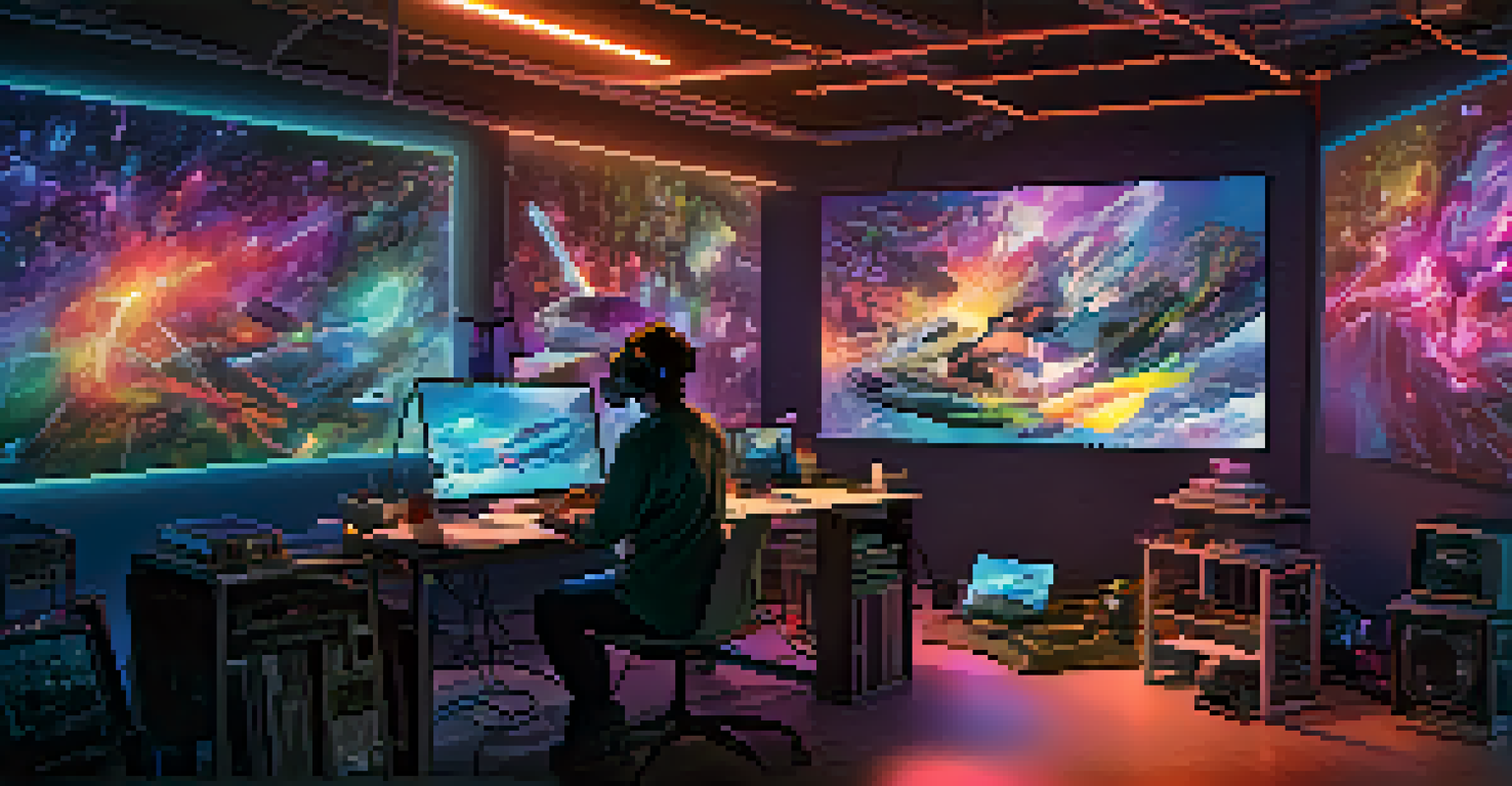Building Virtual Reality Art Experiences with Code

Understanding the Basics of Virtual Reality Art
Virtual reality art merges creativity with technology, enabling artists to create immersive experiences. At its core, VR art transports viewers into a three-dimensional environment, allowing them to interact with digital creations as if they were real. This art form opens up new avenues for expression, transforming how we perceive and engage with artistic works.
Virtual reality is not just a new medium; it’s a new way of seeing and experiencing the world.
Imagine stepping into a painting where each brushstroke comes alive around you. This is the beauty of VR art; it transcends traditional boundaries and invites the audience to participate in the narrative. By understanding the foundational concepts of VR, artists can begin to envision their projects and how they would like viewers to experience them.
However, diving into VR art requires more than just creative vision—it involves coding skills that can bring those visions to life. This combination of artistry and technical knowledge is essential in developing engaging virtual experiences that resonate with audiences.
Choosing the Right Tools for VR Art Creation
When embarking on the journey of creating VR art, selecting the appropriate tools is crucial. There are several software options available, such as Unity and Unreal Engine, which provide robust platforms for VR development. These tools not only allow for detailed graphic design but also integrate coding capabilities that can enhance the artistic experience.

For artists who are new to coding, platforms like A-Frame or Processing can be more approachable. These frameworks simplify the coding process, making it easier to create interactive experiences without getting lost in complex programming languages. Choosing the right tool can significantly impact the artistic process, enabling you to focus more on creativity rather than technical hurdles.
VR Art Blends Creativity and Tech
Virtual reality art combines artistic vision with technical skills, creating immersive experiences that engage audiences in new ways.
It's also essential to consider hardware compatibility, as the VR experience varies across different devices. Ensuring that your chosen software can effectively run on popular VR headsets will help you reach a wider audience and provide a seamless experience.
Essential Coding Skills for VR Art Development
While a background in art is invaluable, coding skills are equally important in the realm of VR art. Familiarizing yourself with languages like JavaScript or C# can unlock a world of possibilities in creating dynamic and interactive experiences. These programming languages enable you to manipulate objects, respond to user inputs, and create engaging animations.
Art is not what you see, but what you make others see.
Think of coding as the spine of your VR artwork; it provides structure and functionality to your creative ideas. By understanding fundamental coding concepts like loops, functions, and variables, you can begin to construct complex interactions within your virtual environment. This knowledge will empower you to breathe life into your artistic visions.
Moreover, consider exploring tutorials and online courses that focus on coding for VR. These resources can provide practical examples and hands-on practice, helping you build confidence in your coding abilities while honing your artistic skills.
Designing User Interactions in VR Art
User interaction is a pivotal aspect of VR art that sets it apart from traditional forms. In a virtual space, viewers can engage with the art, moving around it and influencing how it unfolds. Designing these interactions requires thoughtful planning to ensure that the experience is intuitive and enjoyable.
For example, consider how users can navigate through the artwork—should they teleport, walk, or fly? Each method offers different sensations and can evoke various emotional responses. By crafting user interactions that resonate with the theme of your artwork, you can enhance the overall experience and create a deeper connection with the audience.
Choosing the Right Tools is Key
Selecting appropriate software and hardware greatly influences the VR art creation process, allowing artists to focus on creativity without technical barriers.
Additionally, incorporating feedback mechanisms, such as visual or auditory cues, can enrich the interaction further. These elements guide users and make them feel more invested in the experience, transforming passive viewing into active participation.
Incorporating Sound and Music in VR Experiences
Sound plays a vital role in shaping the atmosphere of any virtual reality experience, including art. Integrating music and sound effects can amplify the emotional impact of your artwork, creating a more immersive environment. Imagine walking through a serene landscape while soft music plays in the background—it can heighten the viewer's emotional response and connection to the art.
When designing soundscapes, consider how audio can change based on user interactions. For example, footsteps may trigger different sounds as users walk through your virtual gallery. This dynamic audio approach not only enhances realism but also keeps users engaged and curious about what they might discover next.
Moreover, tools like Spatial Audio can help in creating a 3D sound experience, allowing users to perceive sound directionally. By utilizing these audio techniques, you're not just adding a layer to your VR art; you're crafting a holistic experience that envelops participants in a world of creativity.
Testing and Iterating Your VR Art Projects
Once your VR art project is developed, testing becomes crucial to ensure a smooth user experience. This phase allows you to identify any glitches, user interface issues, or areas where the interaction might feel clunky. Gathering feedback from testers can provide valuable insights into what works well and what might need improvement.
Iteration is key in the development process. Based on the feedback received, you can make necessary adjustments, whether that involves tweaking the code, refining the design elements, or enhancing user interactions. This ongoing process of testing and iteration ensures that your final product is polished and engaging.
Testing Ensures a Polished Experience
Iterative testing and feedback are crucial in refining VR art projects, helping to enhance user interactions and overall engagement.
It's also beneficial to involve diverse testers who can provide different perspectives on the experience. Their varied insights can help you create a more inclusive and accessible VR art piece that resonates with a broader audience.
Showcasing Your VR Art to the World
With your VR art project finalized, the next step is showcasing it to the world. There are various platforms where you can present your work, such as art galleries, exhibitions, or online VR spaces. Each venue offers a unique opportunity to engage with your audience and share your artistic vision.
Additionally, leveraging social media can help you reach a wider audience. By sharing snippets of your VR experience, behind-the-scenes content, or even conducting live demonstrations, you can generate buzz and intrigue around your work. This kind of engagement encourages discussions and connections with fellow artists and art enthusiasts alike.

Remember, the goal of showcasing is not just to display your art but to invite others into your creative world. By fostering dialogue and interaction around your work, you can inspire others and contribute to the growing community of VR art creators.